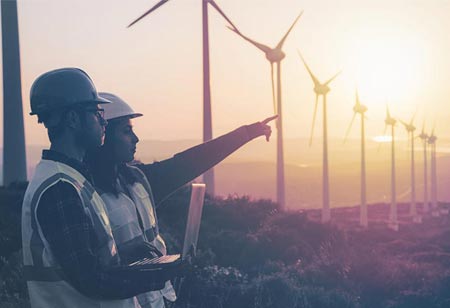

Thank you for Subscribing to Energy Business Review Weekly Brief

To address industry issues and spur innovation, turbomachinery makers are turning to 3D printing.
The energy sector is building new facilities, modernizing power plants, and switching from fuels based on coal and petroleum to cleaner-burning natural gas. These facilities produce electricity from natural gas using industrial turbines as their focal point. Increased fuel efficiency, power generation, system dependability, lower maintenance costs, and efficient manufacturing and supply chain are all necessary in the competitive turbomachinery business. Gas turbine producers have much to gain from this quick change, but conventional manufacturing techniques can't keep up with the pace of invention. High-requirement superalloys and complex forms are needed for gas turbines, yet conventional production processes result in waste, lengthy lead times, and expensive multipart assemblies. Top turbomachinery producers are turning to additive manufacturing (AM), commonly called 3D printing, to address these issues and spur innovation. AM revolutionizes different applications in turbomachinery component production by offering design flexibility, increased system performance, dependability, shorter time to market, and improved supply chain efficiency. Increase Fuel Efficiency and Power Output by Optimizing Combustors Combustors are essential to the operation of turbomachinery because they facilitate clean burning and combustion. Although they are composed of robust, heat-resistant superalloys, conventional machining techniques can potentially increase waste and shorten tool life. For optimum performance, premium combustion components are required. Engineers can design combustors with a great deal of flexibility thanks to additive manufacturing. They can create unique mixing chambers and orifice shapes, optimize fuel and air mixtures, and replace multipart assemblies with monolithic parts, improving yield, lowering labor costs, and guaranteeing component integrity under extreme operating pressures and temperatures. Engineer Stator Vanes to Withstand High Temperatures and Pressures Turbomachinery's stator and compressor vanes face extreme thermal and structural stresses in "hot zones," requiring precise part quality, accuracy, and integrity for turbine performance. Traditional methods, such as molds and wax patterns, are costly and time-consuming, while additive manufacturing increases production yield and reliability. This method allows designers to incorporate intricate interior cooling channels into crucial elements, enhancing thermal performance and optimizing efficiency. However, the complex shapes need brazing, potentially reducing the finished component's durability and strength. Open Up New Impeller Performance Parameters Industrial gas turbine impellers can have high waste rates due to their intricate forms and difficult metal cutting. To create cost-effective designs, engineers must compromise on high-performance impellers. Additive manufacturing can optimize topology and lattice structure, achieving faster RPMs, less energy, and higher total power output. Two AM processes, machining billet and direct metal printing, offer advantages, such as eliminating complexity constraints, speeding up production, and reducing waste. 3D-printed wax patterns can be used for investment casting, providing flexibility and cost savings in a tool-free workflow. Reduce Tooling Costs and Produce High-Quality Casings and Ducting Faster Gas turbine efficiency depends on adequate intake air supply and proper exhaust gas evacuation. Industrial gas turbines need intricate ductwork and casings frequently made to order for the location. Modern additive manufacturing techniques enable engineers and architects to design stronger, more dependable investment casting patterns for ducting and turbine casings, increasing gas flow efficiency, lowering failure spots, and increasing uptime and dependability. The Benefits of Additive Manufacturing In the high-tech turbomachinery sector, additive manufacturing (AM) is an essential technique that makes it possible to produce complicated parts for form, fit, and function testing. This method dramatically shortens the design cycle, improving fuel economy and lowering the entire power plant's maintenance costs and greenhouse gas emissions. It produces combustors, stator vanes, impellers, and castings.
I agree We use cookies on this website to enhance your user experience. By clicking any link on this page you are giving your consent for us to set cookies. More info